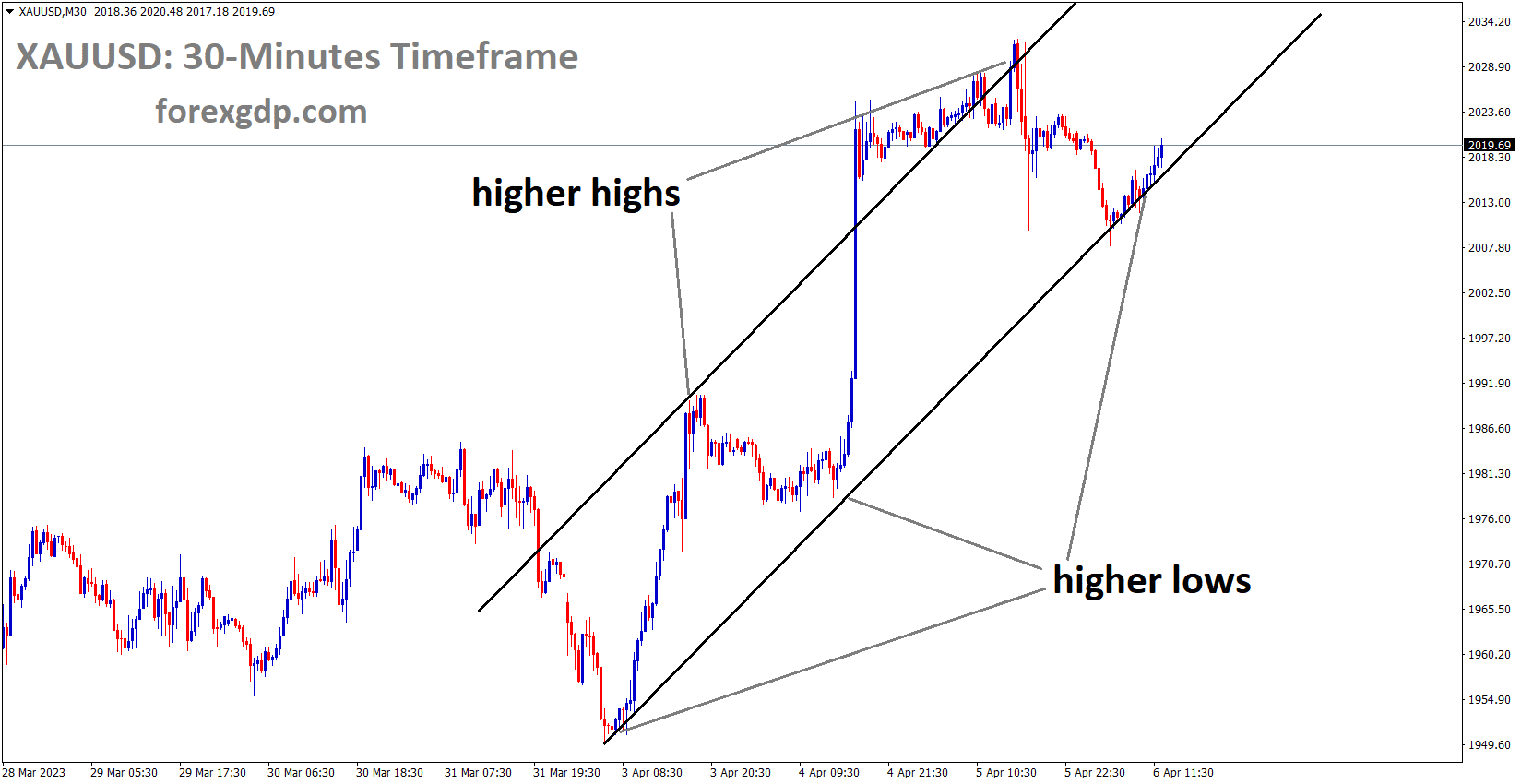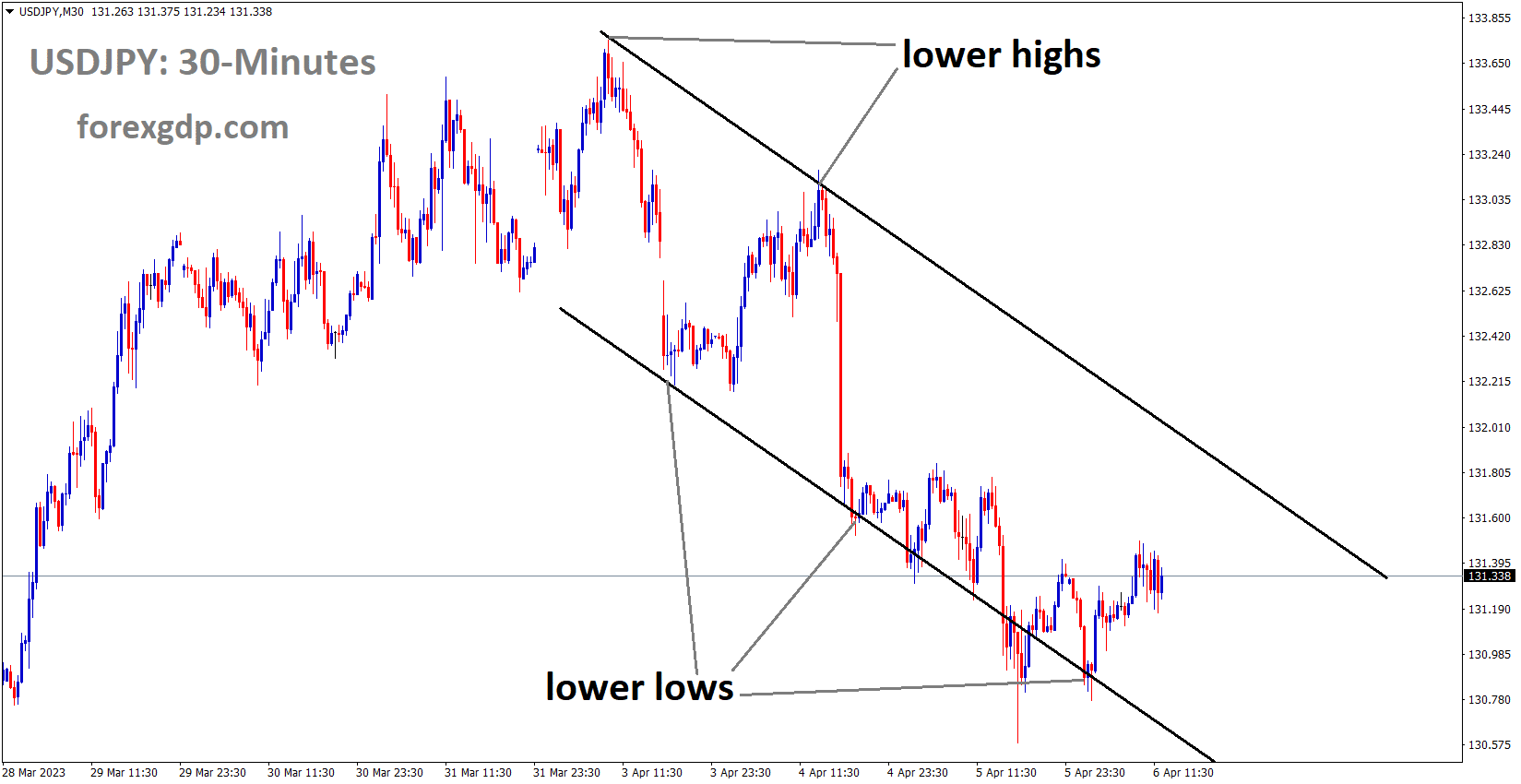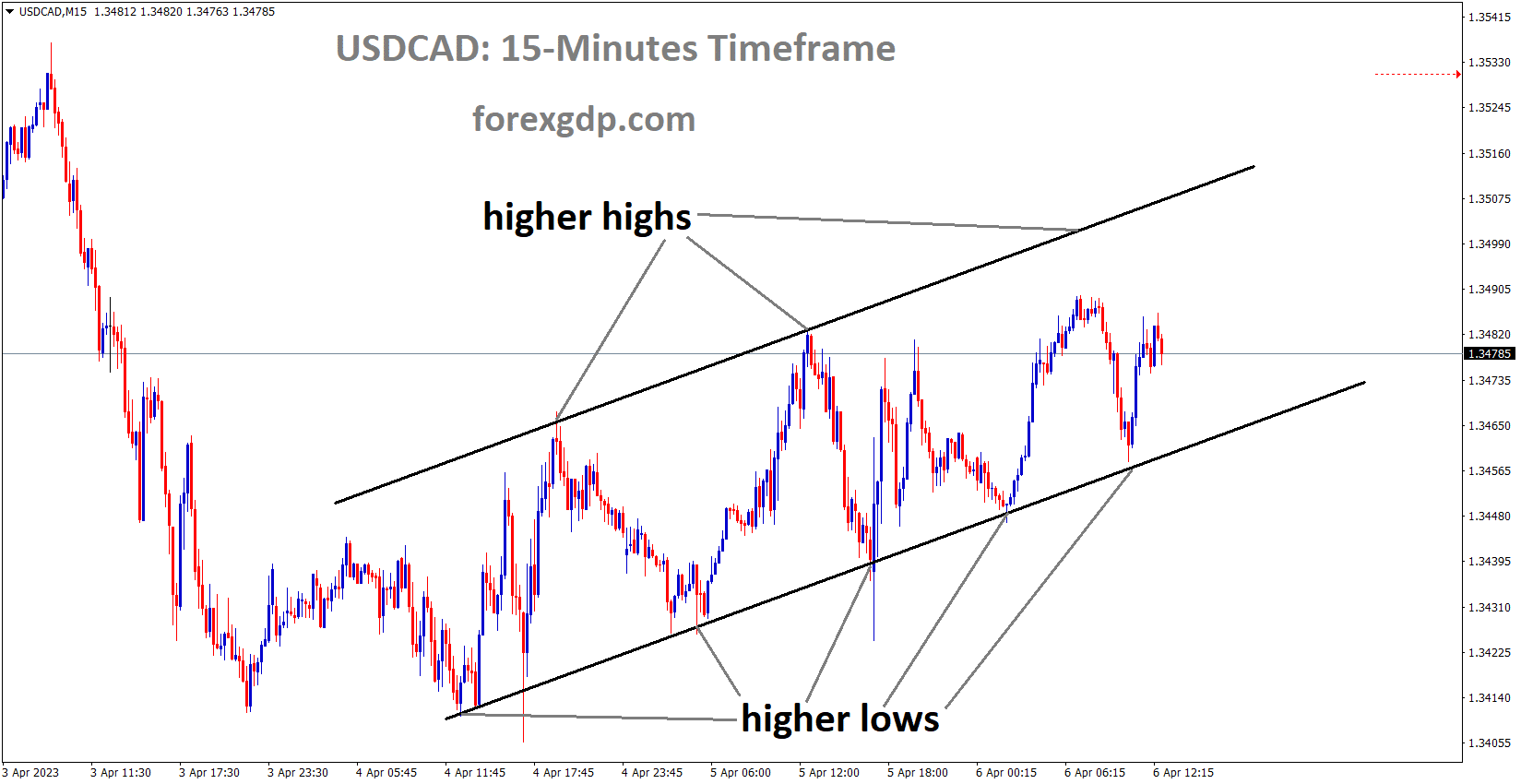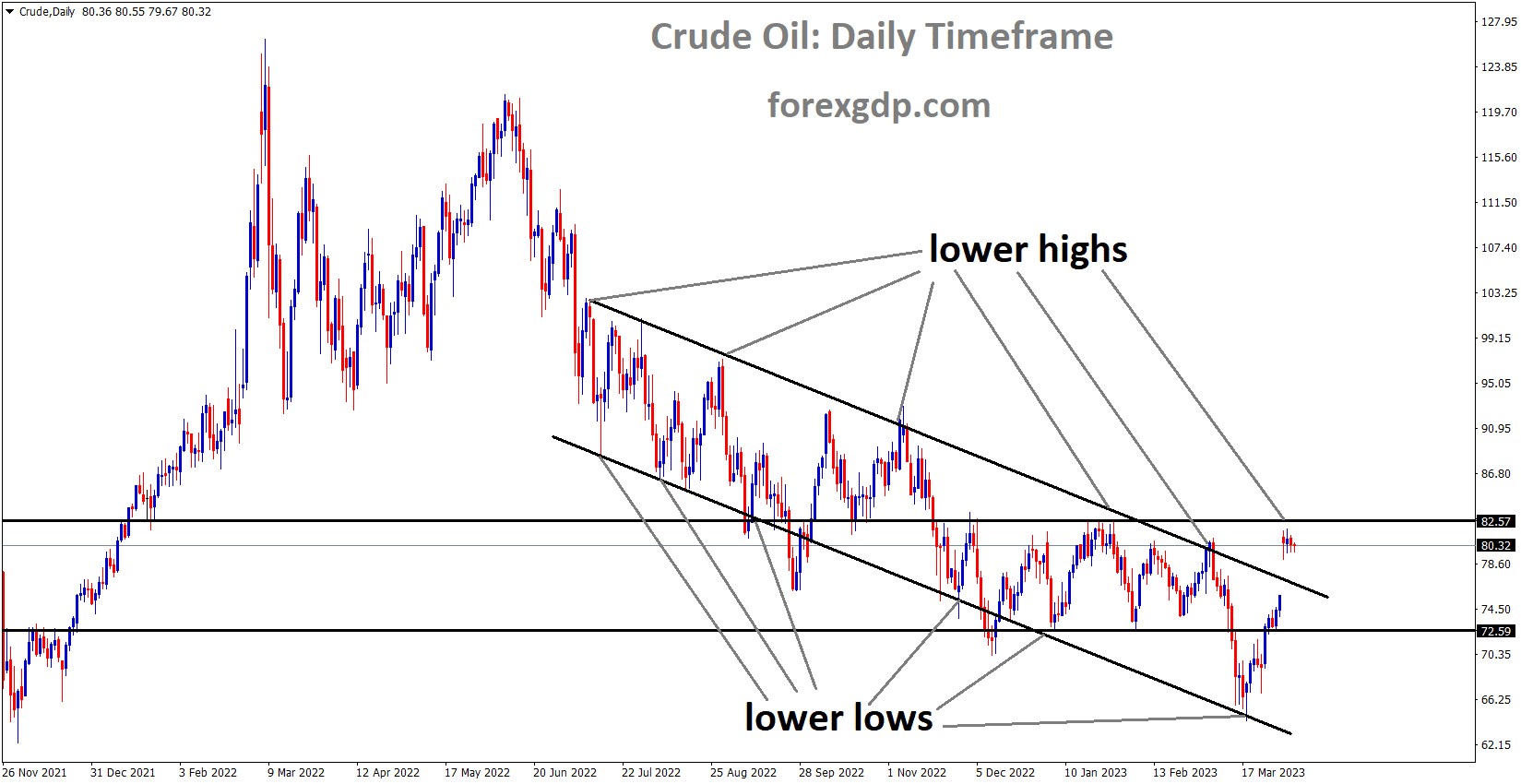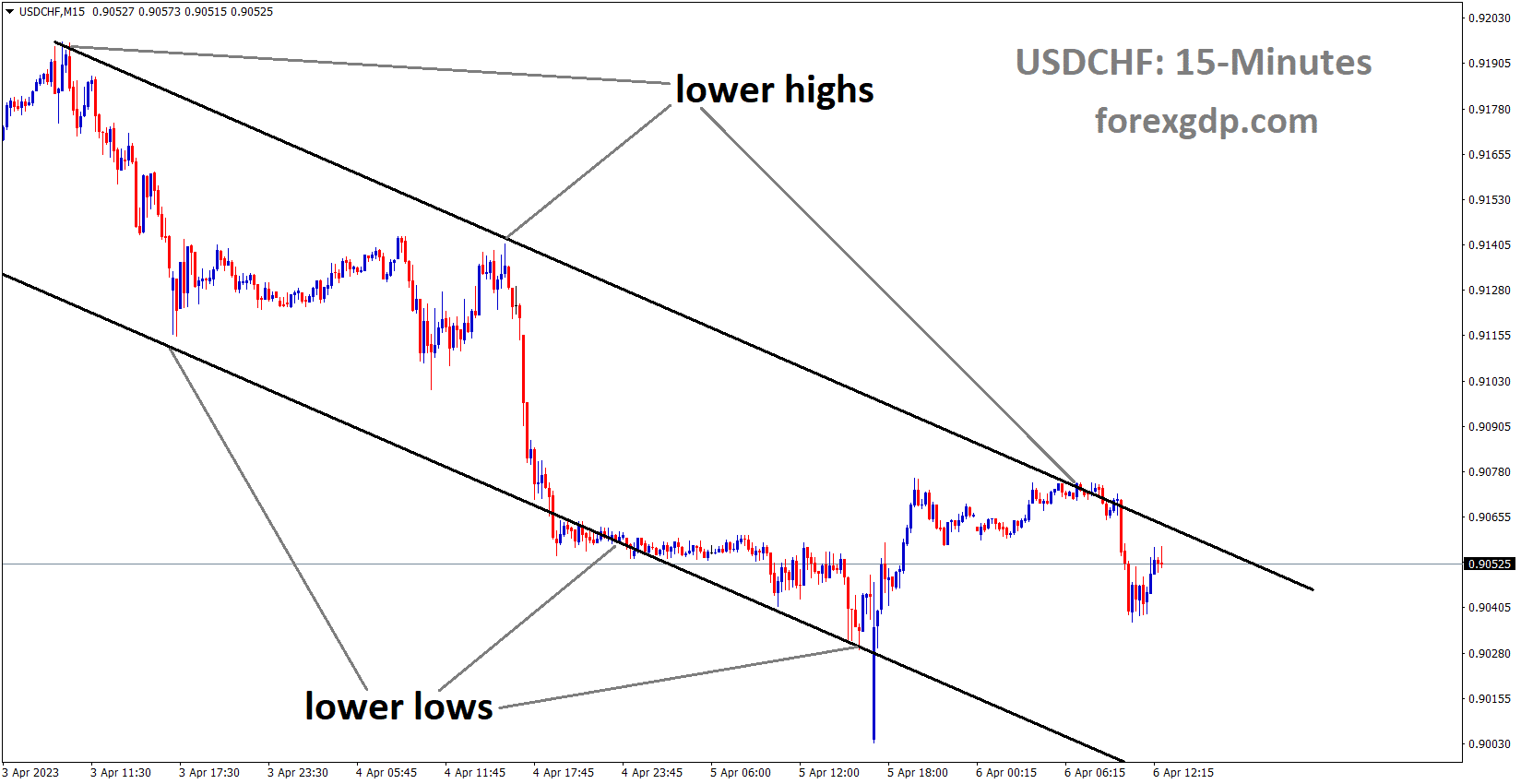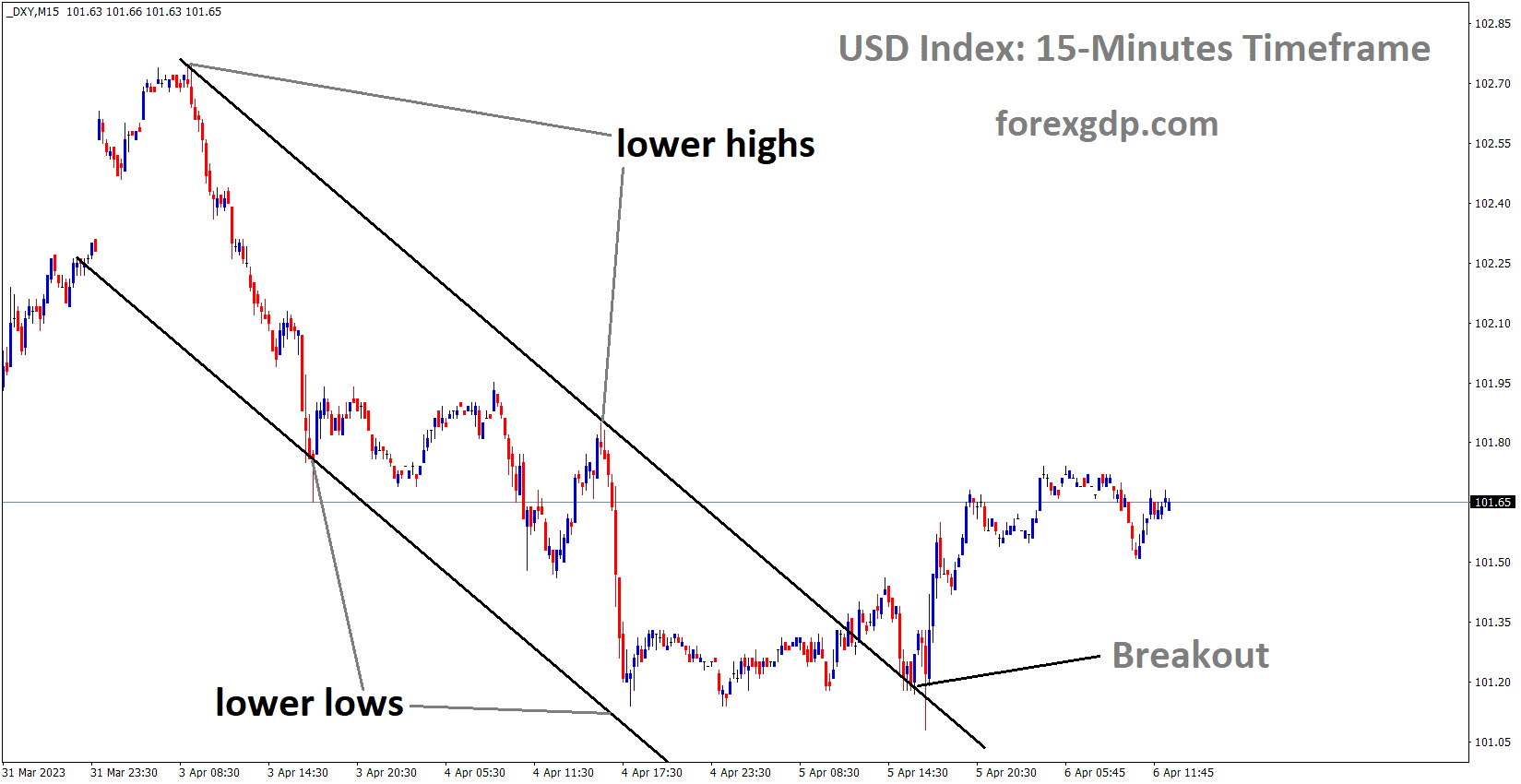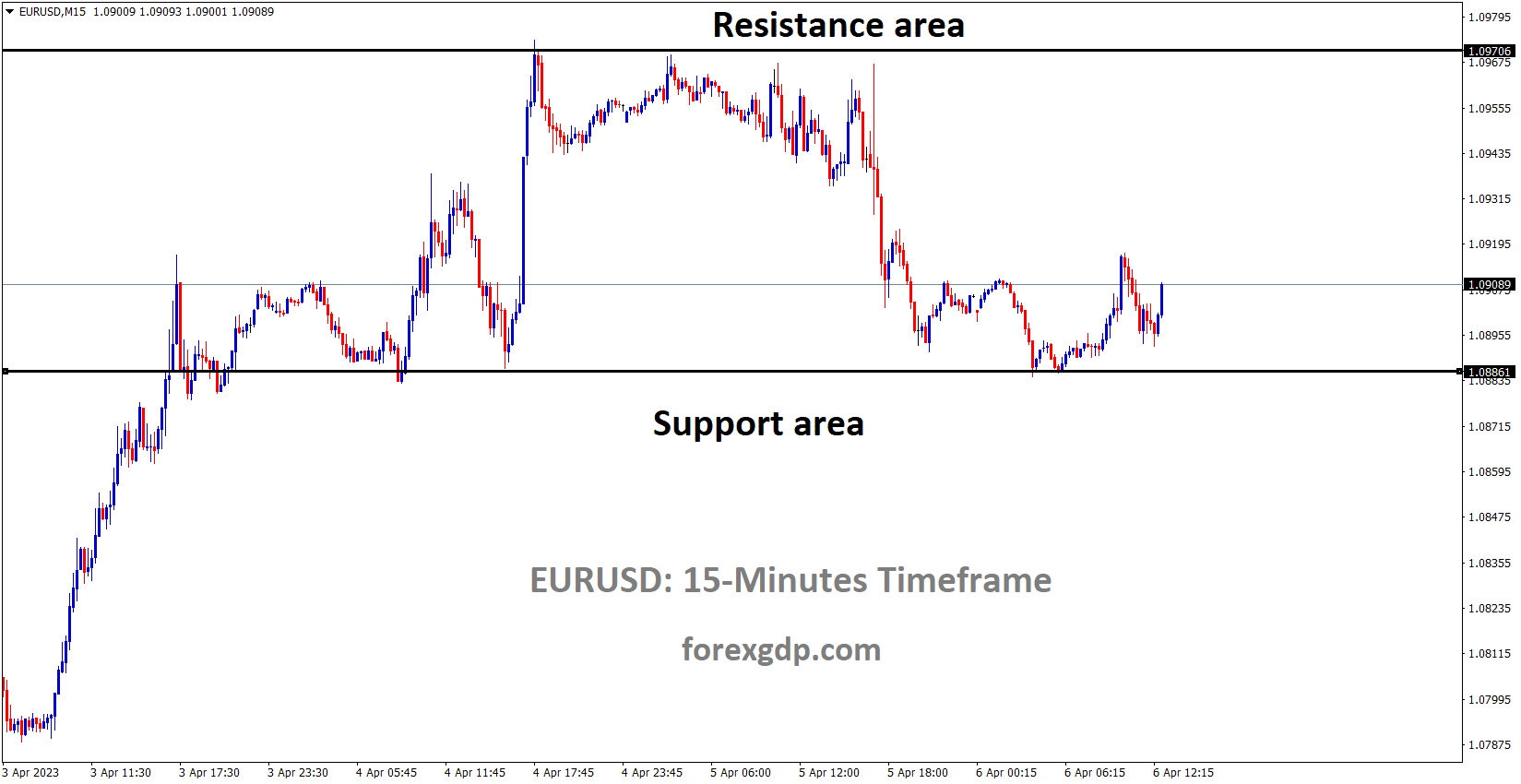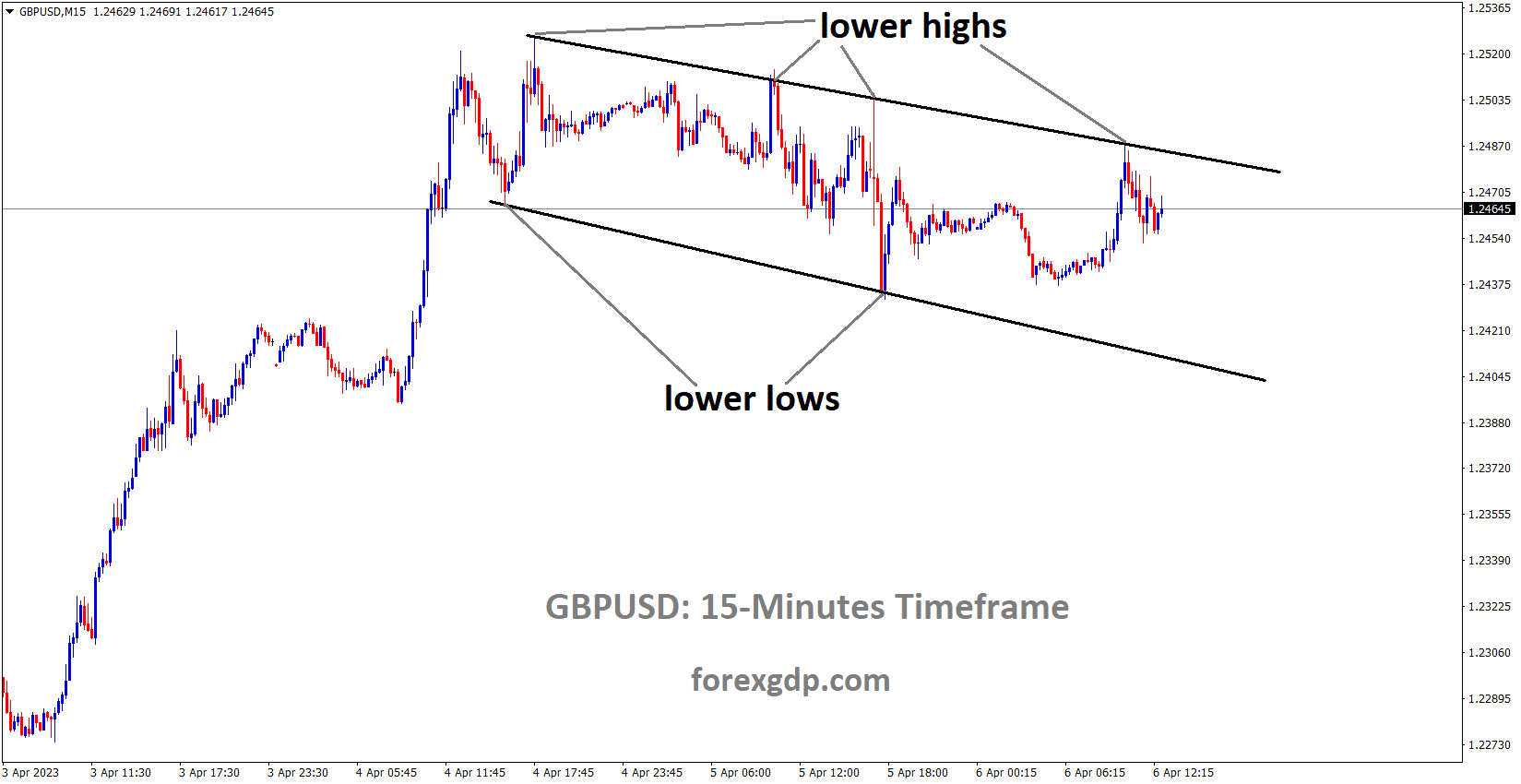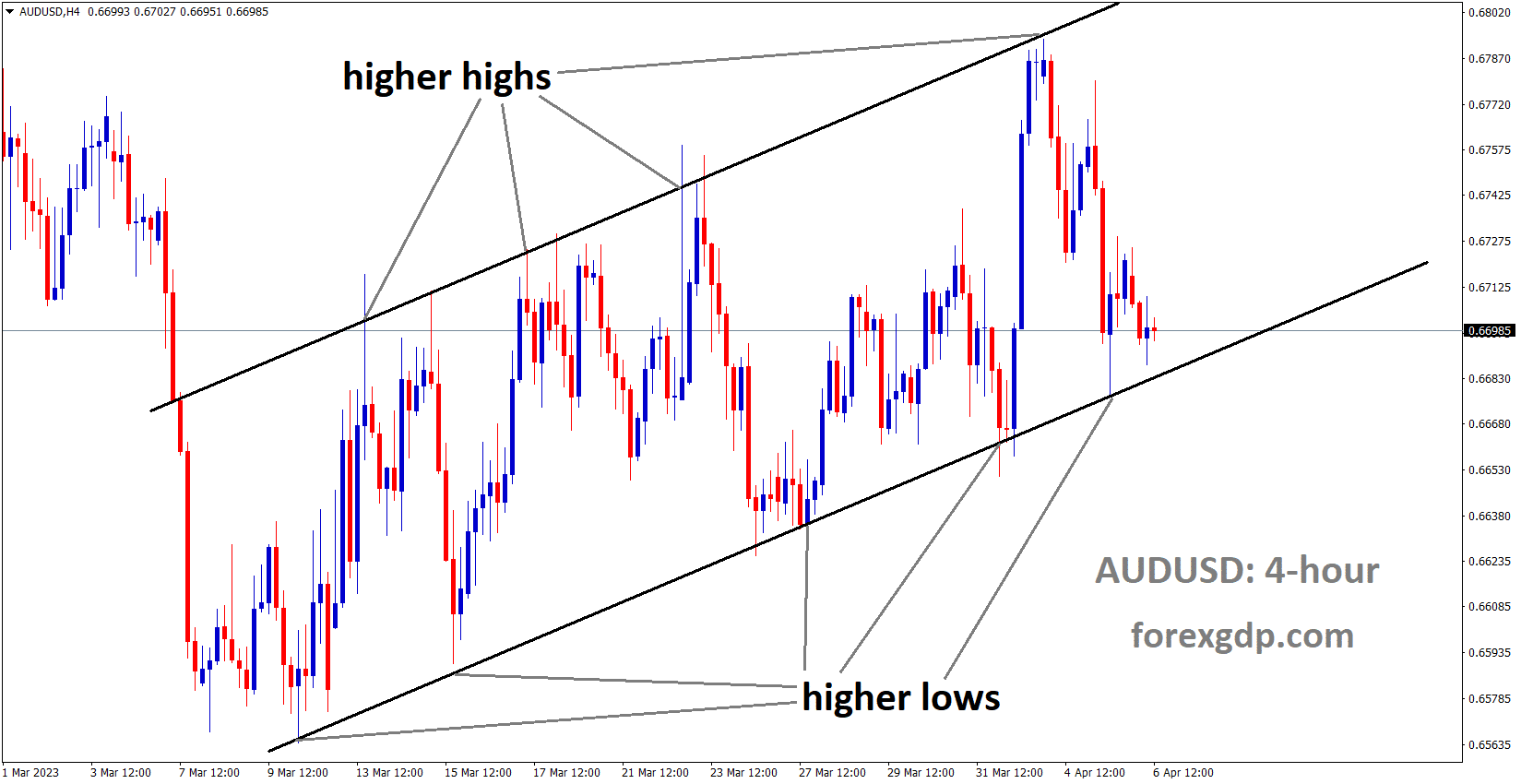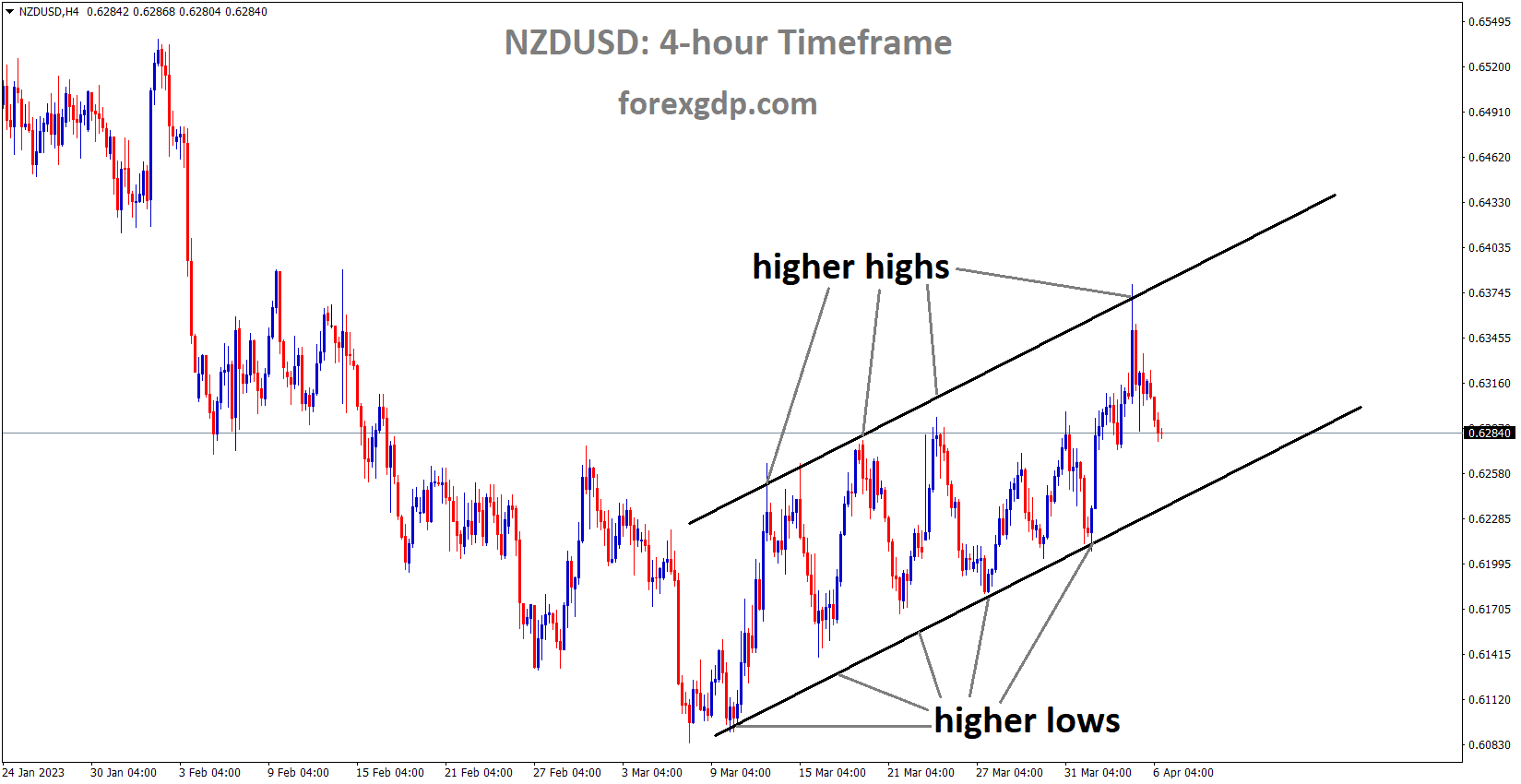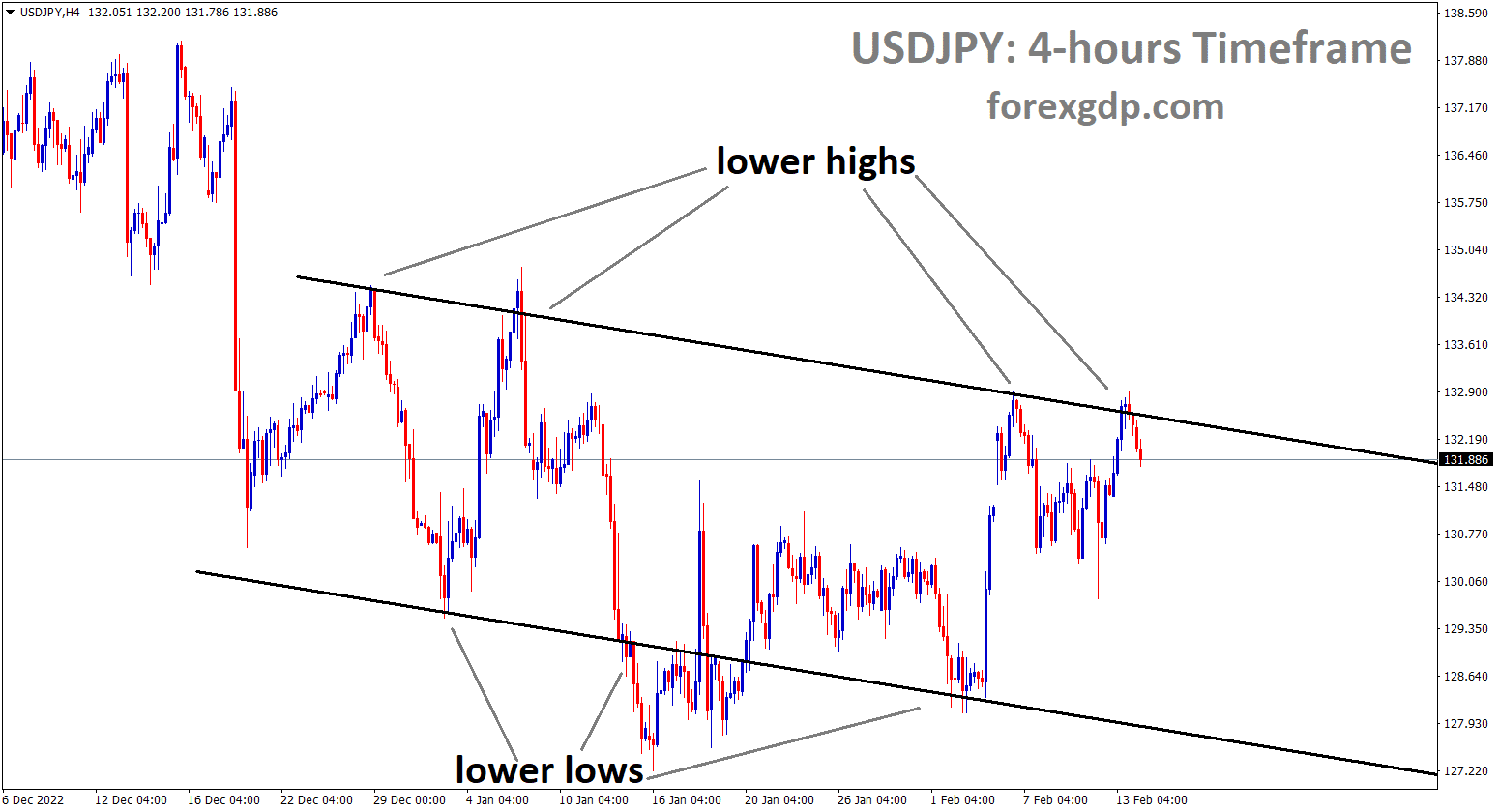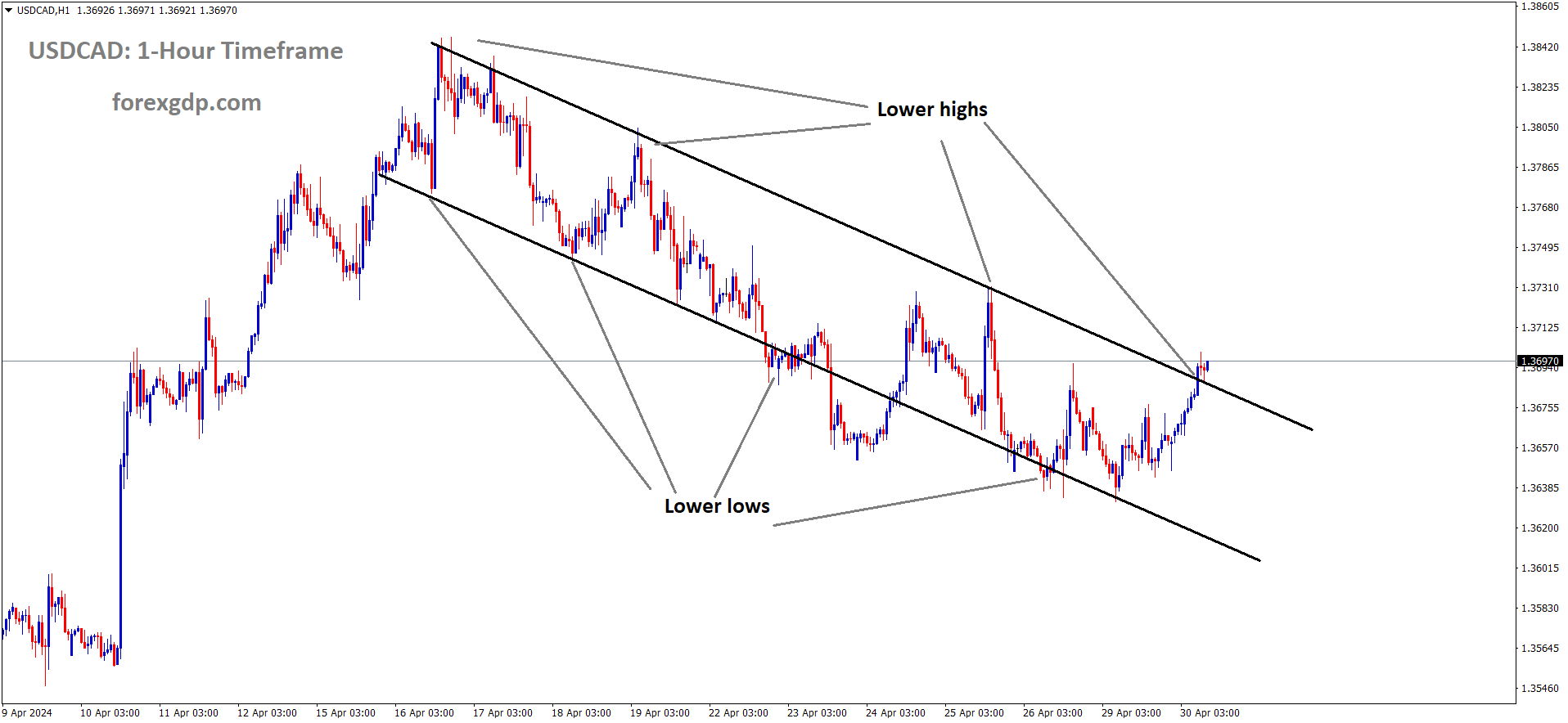GOLD Analysis
XAUUSD Gold price is moving in an Ascending channel and the market has rebounded from the higher low area of the channel.
Around the $2,035 mark, gold prices fluctuated on Wednesday between slight gains and losses as traders waited for fresh influences that might determine the near-term trading bias for precious metals. Gold maintains a bullish profile despite today’s lacklustre moves, with new all-time highs clearly in view given its robust performance over the previous four weeks. The decline in bond yields brought on by the Fed’s dovish repricing of its monetary policy direction will continue to be a major catalyst for the yellow metal. For background, the U.S. banking sector turmoil significantly lowered the growth forecast and increased the risk of a downturn, which caused the U.S. Treasury curve to shift sharply downward since mid-March.
The idea that there will be trouble for the US economy has been supported by recent macro statistics. For instance, the March ISM manufacturing and services PMIs fell short of forecasts, indicating a sharp drop in demand conditions. If the economy doesn’t pick up shortly, layoffs could pick up in the upcoming months, sending the nation into a painful recession. Theoretically, the world’s largest economy experiencing a recession should be good news for gold prices, as it may prompt the U.S. central bank to change direction and start slashing interest rates in an effort to avoid a financial crisis. If the situation results in a sharp decline in mood and increases demand for safe haven assets on the financial markets, it may also be advantageous for defensive assets. In the near future, traders should keep a close eye on incoming statistics to better evaluate the economic outlook and the Fed’s upcoming actions/measures. The March U.S. labour market report, however, is a significant announcement worth paying attention to on Friday. According to consensus projections, American businesses added 240,000 employment in the past month, but given this week’s weak macroeconomic data, a bad surprise shouldn’t be ruled out.
USDJPY Analysis
USDJPY is moving in the Descending channel and the market has rebounded from the lower low area of the channel.
On Thursday, Japanese Prime Minister Fumio Kishida said he is not looking for a quick shift in monetary policy.
According to Kyodo News Agency, on April 10 Prime Minister Kishida is scheduled to meet with incoming Bank of Japan Governor Kazuo Ueda, and it is expected that during this meeting, Ueda will affirm the intention to maintain current monetary easing for some time.
USDCAD Analysis
USDCAD is moving in an Ascending channel and the market has rebounded from the higher low area of the channel.
Predictions put net employment growth in Canada at 12,000 for the month under review, down from 21,000 in February. Additionally, the jobless rate is forecasted to rise to 5.1%, from 5.0% last month. Citibank’s economic analysts summarise and explain the most important macro statistics in a brief overview. Despite risks tilted to the upside due to strong population growth from immigration, we anticipate a modest 10K decline in employment in the labour force survey in March, following several months of very strong employment gains. Even if business and the US economy both slow down later this year, which should lead to job losses, the resulting increase in unemployment might be mild. Assuming a normal rate of job loss in March, the jobless rate would rise to a still-low 5.2%.
For the third day in a row, the USDCAD pair is seen trading with a positive bias ahead of the important job details. Weaker sentiment surrounding Crude Oil prices hurts the commodity-linked Loonie, which, together with a slight US Dollar uptick, helps the main currency. If the Canadian labour market data comes in lower than expected, it could put more pressure on the Canadian dollar and help the USDCAD currency combination. However, the Canadian Dollar may find support from better data, capping the major’s upside potential.
Crude Oil Analysis
Crude Oil is moving in the Descending channel and the market has reached the lower high area of the channel.
Important USDCAD technical levels that Valeria explains further include: If the pair drops below the 1.3400 level, we could see further losses before finding support around the 1.3250/70 area, where it found support several times between November and February. If the pair breaks above 1.3520, it may proceed to the 1.3600 area. Employment Change, published by Statistics Canada, tracks the fluctuation of the country’s labour force. An increase in this indicator is generally viewed as a good sign for economic development as it indicates an increase in consumer spending. For the CAD, a high reading is viewed as bullish, while a low value is viewed as bearish. Statistics Canada’s Unemployment Rate is calculated by taking the number of unemployed people and dividing it by the total civilian working force. It’s a forward-looking measure of Canada’s economic health. The Canadian employment market shows no signs of growth if the rate is high. Therefore, a rise would be bad for Canada’s GDP. A drop in the number is generally interpreted as bullish for the CAD, while a rise is typically interpreted as bearish.
USDCHF Analysis
USDCHF is moving in the Descending channel and the market has reached the lower high area of the channel.
After failing to rebound from a 22-month bottom set the previous day, the USDCHF dropped to 0.9060 in early Thursday trading. The Swiss Franc pair is benefiting from the general decline in the US Dollar before the release of key job data.
Nonetheless, the dollar showed signs of a corrective bounce on Wednesday despite recession fears being sparked by disappointing US data. However, the dollar appears to be under pressure due to rising expectations that the Federal Reserve will not raise interest rates in May and growing opposition to the dollar’s standing as a reserve currency. Data-wise, March’s ADP Employment Change fell to 145K from the previously reported 261K and the previously estimated 200K. The final March S&P Global Composite and Services PMI figures were also disappointing, falling to 52.3 and 52.6, respectively, from the preliminary estimates of 53.3 and 53.8, respectively. The US ISM Services PMI fell to 51.2 in the mentioned month, which is significantly lower than the 54.5 forecast and the 55.1 reading from the month before. The key news that recently challenges the greenback’s imperial status, however, is Russia’s recent favouring of the Chinese Yuan and the China-Brazil pact to disregard the US Dollar as an intermediate currency. Some US lawmakers, in an effort to protect the value of the dollar, have reportedly suggested a Gold Standard Restoration Act. The legislation proposes re-pegging the dollar with a predetermined weight of Gold, as it was prior to 1971.
The FedWatch Tool provided by CME Group also indicates a near 57.0% probability that the US central bank will halt its rate hike trajectory in May. In the midst of these maneuvers, S&P 500 Futures have followed the Wall Street standards and are showing slight losses. However, yields continue to put downward weight on the US dollar. On Wednesday, yields on benchmark 10-year US Treasury bonds hit a new seven-month low after falling for five days in a row, and their 2-year counterparts fell for four days in a row before rebounding back above 3.79%. The USDCHF pair will be guided during the trading day by the Swiss Unemployment Rate for March, which is forecast to stay unchanged at 1.9% and comes before the US Weekly Initial Jobless Claims. However, this week’s US Nonfarm Payrolls report on Friday will be closely watched for cues.
USD Index Analysis
US Dollar index has broken the Descending channel in upside.
In a move that deviates from recent price activity, the US Dollar edged up over night. In response to weak US statistics, Treasury yields fell once more, and equity markets also declined.Recently, it has become more common for investors to perceive bad news as positive for stocks in the hopes that it will encourage the Federal Reserve to ease up on the tightening stance. Treasury yields to some extent reflected this view of a Fed that was less hawkish, but the US Dollar received some support. The dollar has usually closely followed changes in Treasury yields in recent trading sessions.
A wider change in the market response system may be indicated by this disconnect. It’s possible that foreign exchange markets will resume their more conventional approach to the idea that unfavourable news boosts perceptions of safe-haven currencies. The Japanese Yen was the only currency to outperform the US Dollar during the most recent trading session. Markets frequently perceive this currency to outperform during difficult economic times and underperform during periods of economic growth. For market positioning, it might be worthwhile to pay heed to this intermarket price action. On Friday, US payroll statistics could spark a significant market shift.
EURUSD Analysis
EURUSD is moving in the Box pattern and the market has rebounded from the horizontal support area of the pattern.
European Central Bank Chief Economist Philip Lane stated that there will be three factors to consider when making their choice in May during a lecture he gave at a university in Cyprus.
The future of inflation is a key factor. Then, it’s not enough to simply measure inflation; we need to isolate the fundamental dynamic. And you can use that to gauge how soon inflation will start to decline. Third, the rate at which these interest rate hikes are slowing the economy and reducing inflation is impressive. Due to these factors, we no longer announce or indicate beforehand what to anticipate from the next meeting. The goal should be to comprehend each and every piece of incoming information. A rate hike would be warranted if predictions hold true by the May conference. The economy’s supply side is expected to improve over the next few years. The food industry has seen the highest rate of growth. The rate of inflation for services is expected to be a hot topic this year.
GBPUSD Analysis
GBPUSD is moving in the Descending channel and the market has fallen from the lower high area of the channel.
DMP members anticipated CPI inflation of 5.8% a year ahead, down from 5.9% in February, according to the most recent Bank of England Monthly Decision Maker Panel survey, published on Thursday.
Inflation forecasts based on the CPI for the next three years increased slightly from 3.4% in February to 3.5% in March. Over the next 12 months, companies forecasted a 5.3% rise in output prices, down 0.1 percentage points from the previous month. The average over the past three months decreased by 0.1 percentage points, bringing it to 5.5 percent, 1.1 percentage points below its September high. In March, analysts predicted a decrease of 0.1 percentage points in annual wage increase, to 5.6%. Real annual salary growth slowed to 6.5% from 6.7%.
AUDUSD Analysis
AUDUSD is moving in an Ascending channel and the market has reached the higher low area of the channel.
Australian banks are well capitalized, profitable, and highly liquid, according to the Reserve Bank of Australia’s semiannual Financial Stability Review, released on Thursday. The Australian economy is vulnerable to worldwide economic volatility. Banks in Australia, however, are extremely liquid, profitable, and have ample capital. APRA has increased its monitoring of domestic organisations in order to draw lessons for future regulation.
Credit restrictions are probable as a result of rising threats to global financial stability. To prevent digital bank runs, regulators will need to impose stricter regulations. If inflation remains high and central banks maintain their current stances, the financial system is also at danger. When it comes to interest rates and inflation, the majority of Australian households and businesses are prepared. However, for some, the strain and financial restriction will begin immediately. The business lending and domestic construction sectors are experiencing stress. The domestic banking sector is prepared to handle a rise in bad debts. Banks are preparing for an uptick in delinquent loans, albeit from historically low starting points. Just one percent of all mortgages are underwater. Maintain a heightened state of vigilance regarding cyber threats, climate change, and international tension.
NZDUSD Analysis
NZDUSD is moving in an Ascending channel and the market has fallen from the higher high area of the channel.
Intense selling pressure on Thursday pushes the NZDUSD down further from yesterday’s retracement decline from the 0.6400 area, the pair’s highest level since February 14. The pair has kept its early European session bid tone and is trading just below the 0.6300 round number. Some follow-through US Dollar recovery from over a two-month low is seen exerting downward pressure on the NZDUSD pair as investors process the Reserve Bank of New Zealand’s unexpected 50 bps rate increase on Wednesday. As weaker US economy data continues to trickle in, investors are becoming more wary of taking on additional risk. The risk-averse New Zealand dollar is hurt by this, while the safe-haven Greenback gains.
However, the USD rally is likely to be contained, as it is widely believed that the Federal Reserve has completed its rate-hiking cycle for the foreseeable future. In fact, the markets presently price in a 50/50 chance of a rate cut by year’s end and a 25 bps rate lift-off at the May FOMC policy meeting. Even though the US ADP report released on Wednesday revealed that private-sector employers added 145K jobs in March instead of the 200K expected, bets were still lifted by the news. Furthermore, the ISM Services PMI showed growth slowed in March, with a deceleration in its Employment sub-index, indicating the Fed’s efforts to cool the labour market may be having some effect. As a result, US Treasury bond yields remain near their seven-month low, which may discourage traders from making large USD bullish wagers and cushion the blow to the NZD/USD pair in the short term. Bullish traders have been bolstered by this week’s prolonged breakout through the 200-day Simple Moving Average, which suggests the emergence of some dip-buying at lower levels is possible. Therefore, in light of this week’s highly anticipated publication of US monthly jobs data on Friday, it would be prudent to wait for strong follow-through selling before confirming that the NZD/USD pair has established a near-term top and positioning for any further losses.
Don’t trade all the time, trade forex only at the confirmed trade setups.
Get Live Free Signals now: forexgdp.com/forex-signals/

